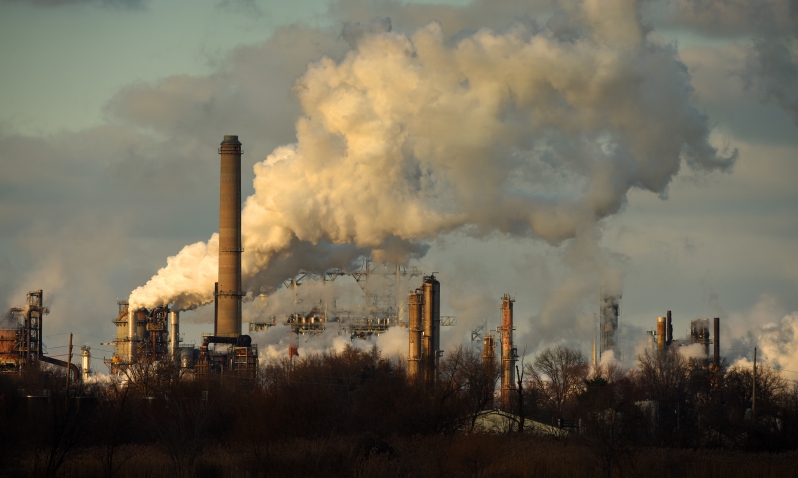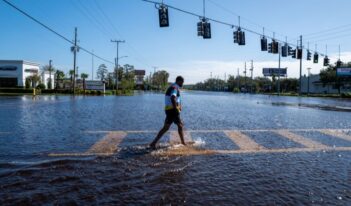
Scholars propose novel measures to achieve environmental justice for all.
Low-income, minority, and tribal communities disproportionately suffer from the distribution of pollution in the United States.
In 1994, President Bill Clinton directed federal agencies to identify programs, policies, or activities that imposed disproportionate and adverse effects on “minority populations and low-income populations in the United States.” For example, the U.S. Environmental Protection Agency (EPA) has since developed a mapping tool called EJScreen that combines environmental and demographic data to identify geographic regions in the United States that require additional analysis or outreach within EPA programming.
By employing EJScreen, EPA identifies the “most overburdened” communities in the United States through a series of environmental and demographic indicators, such as proximity to hazardous waste sites and the percentage of low-income adults in a community. Once a community is identified as overburdened, EPA provides “additional consideration, analysis or outreach” to prevent further harm from EPA permitting, enforcement, or compliance activities.
Upon President Joseph R. Biden assuming office, his Administration committed to securing the fair implementation of environmental laws, regulations, and policies for all U.S. citizens, regardless of race or income. By executive order, President Biden announced the Justice40 Initiative, a government-wide approach directing federal agencies to deliver 40 percent of all benefits from federal investments in climate and clean energy to disadvantaged communities.
Federal agencies have already taken steps to comply with this initiative. In July 2021, the director of the Office of Management and Budget, the chair of the Council on Environmental Quality, and the National Climate Advisor issued guidance on achieving the initiative’s goals. Among other things, the guidance provides federal agencies with a sample of indices for determining whether a community is disadvantaged.
The White House Environmental Justice Advisory Council—a public advisory committee established by executive order—aims to support the federal government’s efforts to address current and historic environmental injustice. In May 2021, the Council issued recommendations on the development of a climate and economic screening tool, which would include interactive maps highlighting disadvantaged communities throughout the United States.
In this week’s Saturday Seminar, experts discuss recent scholarship on regulatory aspects of environmental justice.
- In an article published in the Fordham Environmental Law Review, Assistant District Attorney William C.C. Kemp-Neal argues for the establishment of a federal preclearance process to govern projects that could create disproportionate environmental harms in communities of color. Kemp-Neal suggests this preclearance process could function like Section 5 of the Voting Rights Act of 1965, which mandated certain jurisdictions prove that proposed changes to their voting laws would not discriminate against minority groups before enactment. Kemp-Neal elaborates that such a process could prevent polluters from placing “locally unwanted land uses,” such as hazardous waste sites, in majority-minority communities already suffering from the effects of environmental racism.
- Even in the absence of substantive environmental justice legislation, state environmental agencies could protect communities of color from disparate environmental harm through pathways provided by Title VI of the Civil Rights Act, according to Brenda Mallory of the White House Council on Environmental Quality and David Neal of the Southern Environmental Law Center. In an article in the Harvard Environmental Law Review, Mallory and Neal propose that Title VI—which prohibits racial discrimination in state environmental agencies that receive federal funds—grants state environmental agencies the authority to consider the potential disparate impact of existing environmental laws on communities of color. Mallory and Neal suggest that if state environmental agencies show that an existing law has a disparate impact on communities of color, the law should be subject to judicial review.
- In an article published in the Loyola Law Review, Rebecca Bratspies of the CUNY School of Law argues for the adoption of a “Renewable Rikers” proposal as a way to benefit New York City residents in the wake of the Rikers Island jail’s proposed closure. Bratspies argues that by using the island to house sustainable energy initiatives, wastewater treatment facilities, and green spaces, rather than noxious power-generation facilities, overburdened communities could gain material environmental improvements. As many of these overburdened communities also suffer from policing policies that disproportionately sent their members to the Rikers Island jail, Bratspies suggests the Renewable Rikers proposal would provide a unique opportunity to tie environmental gains to mass decarceration efforts.
- In an article in the Loyola Law Review, Clifford J. Villa of the University of New Mexico School of Law argues for a new definition of “environmental justice.” He argues that environmental justice has expanded since its development in the 1980s to include a broad range of social justice concerns. Villa also suggests that the traditional definition of environmental justice used by EPA obscures important differences by referencing “the fair treatment and meaningful involvement of all people.” Definitions focused on specific distinctions such as race also often fall short, according to He proposes instead a definition based on Martha Fineman’s “vulnerability theory”—the idea that everyone is vulnerable in some way and that some people are more vulnerable to environmental harms than others. Villa argues that a complete definition of environmental justice should ask three key questions: “What groups are most affected? Why are they affected? What can be done to remedy the problem?” Villa contends that these questions allow observers to account for unique circumstances and uncover the causes of disparate impacts. He cautions that definitions of environmental justice must continue to include race and ethnicity because of the persistence of widespread discrimination and inequality.
- The environmental justice movement ought to focus more on people, which are its greatest strength, argues Rachael Salcido a professor at the University of the Pacific McGeorge School of Law in an article in the UCLA Journal of Environmental Law and Policy. Salcido suggests that current scholarship focuses too heavily on elusive definitions of environmental justice. She instead promotes specific steps that she argues would effectively harness the power of people. Salcido recommends increasing the use of environmental justice assessments—tools prepared to analyze data about possible environmental justice problems. She argues that federal law should require a separate environmental justice assessment—independent of the typical environmental impact statement—for major federal proposals that would have a substantial environmental impact. Salcido contends that assessments would help empower people by providing concise information and should include public notice and comment. Mandating assessments would improve transparency, increase access to this information, and bring to light data that might be missing from other sources, according to Salcido.
- Marginalized communities are more vulnerable to the effects of climate change, natural disasters, pollution, and health crises, in part due to unequal distributions of green and blue infrastructure across and within those communities, according to Craig Anthony Arnold of the University of Louisville Brandeis School of Law. In an article in the William & Mary Environmental Law & Policy Review, Arnold explains that green and blue infrastructure refers to biotic and aquatic features—such as parks, tree canopies, open space, and retention of stormwater—upon which communities rely to provide water-related benefits, boost air quality, promote healthy activities, and build social cohesion. To ensure more equitable planning around green and blue infrastructure, Arnold recommends a model of co-governance that would partner local communities with government agencies. Arnold argues that other solutions fail in important ways: Top-down government programs tend to decenter actual community needs, and private or nonprofit efforts without community input can concentrate power among wealthy, elite, white individuals. Arnold contends that co-governance uses government resources while empowering local communities to make decisions that better serve low-income communities of color.
The Saturday Seminar is a weekly feature that aims to put into written form the kind of content that would be conveyed in a live seminar involving regulatory experts. Each week, The Regulatory Review publishes a brief overview of a selected regulatory topic and then distills recent research and scholarly writing on that topic.



